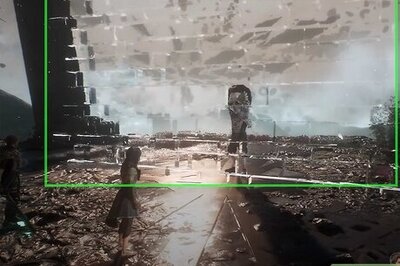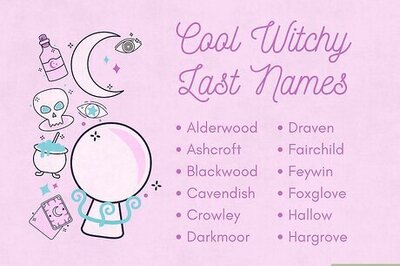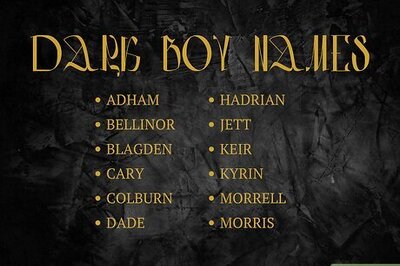
views
Checking Physical Differences Between Real & Fake Games
Check if the cartridge is a translucent green color. If the game cartridge you’re looking at is solid green or any other color, it’s almost definitely a fake. Authentic Pokémon Emerald cartridges are translucent, meaning you can see the circuit board and its parts through the casing, and are a vibrant dark green color. Note: While rare, some sellers might insert an authentic game’s circuit board into a new casing if the original casing gets damaged. So, while the game itself is authentic (as the circuit board is ultimately the most important part), the casing might not be. Most sellers will note this in the product description if this is the case.
See if the game sticker is shiny and holographic. Tilt and move the cartridge around so the “Pokémon Emerald” sticker on the front catches the light. The sticker on an authentic game cartridge is holographic, meaning it will shimmer and sparkle as you move it. If the sticker isn’t holographic, the game is most likely fake.
Look for a rectangular memory chip on the back of the cartridge. If the game cartridge is authentic, you’ll see 4 silver rectangular pieces in the top left corner, which is the game’s memory chip. At least one of the rectangle pieces will have 3 vertical dots running down it. If there isn’t a rectangular memory chip in the top left corner, the game is fake.
See if there are 3 circles labeled “TP” on the back of the cartridge. Look at the right side of the back of the cartridge. If there are 3 silver circular pieces in a vertical line labeled “TP1,” “TP2,” and “TP3,” the Pokémon Emerald cartridge is real. If the game is missing these parts, it’s most likely fake.
Look for a faint, holographic number on the sticker. On an authentic Pokémon Emerald cartridge, a small number is imprinted on the sticker, near the “Pokémon” logo. It’s typically a 2-digit number, like “00,” “22,” or “12,” and a silver color that shimmers in the light. The cartridge is likely fake if the sticker is missing this number.
Look for “2002 Nintendo” inside the cartridge. With the front of the game facing you, look inside the cartridge. If the game is authentic, you’ll see “2002 Nintendo” printed on the circuit board in white font, just above the vertical pieces. “Nintendo” is bolded, while “2002” is not. Counterfeit games often miss this detail entirely, or they forget to include the year or use the wrong font. If you’re having trouble seeing this detail, use a small screwdriver to unscrew the screw on the back of the cartridge and remove the casing.
Check for the official Nintendo logo on the front and back. On the sticker, look for Nintendo’s gold and white seal that reads “Official Nintendo Seal.” Depending on the region the game is from (USA, Australia, etc.), the seal may be on the bottom left or right corner. Then, check the back for the “Nintendo” logo engraved in the center of the cartridge. The game is likely counterfeit if it’s missing either or both of these details. On authentic games, the official seal might read “Official Nintendo Seal of Quality,” depending on the game version.
Check for a simple-looking circuit board that includes all the right pieces. Remove the screw on the back of the cartridge to take off the casing and inspect the circuit board. On the front of an authentic copy, you’ll see a circular battery on the right, a large black rectangular piece (the SRAM) on the left side, a small cylindrical crystal in the left corner, and copper pins running along the bottom. The back is fairly plain, with the 4 rectangular memory chip pieces in the top left corner and the 3 circular “TP” pieces on the right side. If the game is fake, it will be missing these key pieces on the front and back. You might also notice that the pieces are improperly wired, or they’re not connected to the circuit board at all.
Ensure there are no spelling or graphic mistakes on the sticker. Check the sticker and any engravings on the cartridge (i.e., “GAMEBOY ADVANCE” on the front, “Nintendo” on the back) closely for spelling mistakes. Ensure that “Pokémon” always has an accent over the “e,” too. Then, ensure that the logos on the sticker use the correct font and are printed well. Anything that looks off or is printed incorrectly is likely a sign that the game is fake.
Ensure the cartridge fits snugly in GBA and DS consoles. Insert the Pokémon Emerald cartridge into your Game Boy Advance/SP or DS/Lite and examine how easily it fits into the slot. If the cartridge is legitimate, it will easily slide into the slot and fit snugly, regardless of the console you’re playing on. If the game is fake, it might be difficult to insert the cartridge, stick out of the console, or you might notice that it feels loose inside the slot.
Checking Gameplay Differences Between Real vs Fake Games
Check the message when you start up the game. Because Pokémon Emerald is over 20 years old, you’ll often receive a message that the internal battery has run dry when you boot up the game. The game will tell you that it can still be played, but clock-based events will no longer occur. If the seller replaced the battery, though (which they should indicate in the product description), you might not see a message when you start up the game. If the game is fake, you might receive a start-up message that says “The previous save file will be loaded. The game can be played” or, “The save file has been erased due to corruption or damage. The game can be played.” Ensure the game starts up at all. If it doesn’t, this likely means the game is fake. It could also indicate that you bought a damaged authentic copy.
Ensure the game saves and the data doesn’t reset. A common problem that indicates your Pokémon Emerald game is fake is if the save file is constantly getting corrupted, causing you to lose all of your data. The corruption often happens when you get farther into the game, like around the Elite 4 battle, though it can happen randomly at any time. While save file corruption can happen in authentic copies, it’s much less common.
Confirm that you can trade pokémon. Authentic Pokémon Emerald games can always trade with other legitimate and compatible games (e.g., Ruby, Sapphire, FireRed, and LeafGreen). However, the trade function might not work in some fake games. Poorly made replicas can’t usually trade with other Pokémon games. Note: Some high-quality reproductions can trade with other games. So, look for other signs to help confirm if your copy is real or fake.
See if berry trees grow. Fake Pokémon Emerald games do not usually have the proper battery that allows time-based functions to work. So, if you notice that berries don’t grow in your game, or that NPCs don’t give you daily berries, that can be a sign that it’s a counterfeit copy. Note: Authentic games can also lose this function when the battery runs dry (hence the common “internal battery” message), so this isn’t a 100% confirmation that your game is fake.
Listen for a clear sound quality. Fake copies of Pokémon Emerald often have sound quality issues, with the music and other noises sounding very faint or garbled. You might notice that the sound randomly shifts from stereo to mono (or vice versa) after you save the game, which you can’t change. On the other hand, legitimate Pokémon Emerald games generally retain their sound quality.
How to Avoid Fake Pokémon Emerald Games
Buy games from reputable and well-reviewed online sellers. If you’re looking for a copy of Pokémon Emerald on an online marketplace like eBay or Facebook, always check out the seller’s reviews before you click “Purchase.” This tells you if people are happy with the game they bought, or if they mention receiving a fake. Also, ensure the product description is actually about Pokémon Emerald and describes any wear and tear to the game. GameStop and other gaming stores often sell used copies of Pokémon Emerald. However, GameStop does not authenticate used games, so there’s no guarantee that the used games they sell are legit. If you shop at a store like GameStop, ask the employees if you can visually inspect the game and check for signs that it’s real. They might even allow you to test out the game before you buy it, too.
Compare images of the seller’s cartridge to real pictures of the game. Inspect the seller’s images of the game cartridge closely to determine if it’s real or fake. To check if any small details are out of place, pull up images of authentic cartridges online. Lots of YouTube videos show what authentic Emerald cartridges look like. Additionally, many Reddit users on the r/PokemonEmerald subreddit help authenticate images of cartridges. Make sure you’re comparing images of the same game version. For instance, if you’re looking at the US version, compare it to US cartridges. If the seller’s images of the game look like stock images, message them to ask for new pictures. If the seller is legit, they’ll be more than happy to send you better pictures to make a sale. If the game is fake, the seller might refuse to send new pictures (or never bother to message you back). If you’re not sure whether the images are stock photos or not, save the images and use Google’s reverse image search to see if the exact same photos pop up on other websites. Check out the game cartridge in person, if possible. This makes it easier to inspect the game and ensure it’s real or fake.
Be wary of low prices and great deals. Authentic Pokémon Emerald games typically sell for upwards of $100. This is an incredibly popular game that’s old and hard to get your hands on, so it tends to be pretty expensive! If you see cartridges going for less than $100, be extra wary and thoroughly check that it’s legit. Games that are under $50 are very likely to be fake. Buy the game with a credit card, if possible. If your game turns out to be fake and the seller refuses to give you a refund, you can file a dispute with your credit card company to get your money back.
Is there an issue with playing fake Pokémon Emerald games?
Fake Pokémon Emerald games can have save issues. Lots of people buy counterfeit reproductions of Pokémon Emerald on purpose, as fake game cartridges are usually much cheaper and the gameplay runs virtually the same as the real deal. The biggest downside of buying a fake Pokémon Emerald game is that corruption is common, so you might lose your save file at any point while playing the game. As mentioned, time-based gameplay elements often don’t work on fake copies, either. If the copy is of poor quality, you might not be able to trade pokémon. As an alternative to buying a fake game, consider playing Pokémon Emerald on an emulator. Emulators typically don’t have the same save issues. Additionally, the time-based functions still work, and with many versions, you can trade. The only con is that you don’t have a physical copy of the game.



















Comments
0 comment